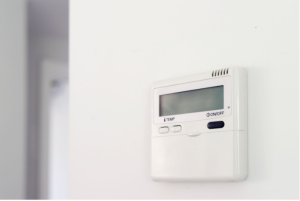A digital thermostat is one of the newest technologies in home heating and cooling. The best thing about a digital thermostat is that it can be controlled remotely, meaning you can set your temperature before you get home or while you’re away. They also save energy by turning it off when not in use. But there are some disadvantages to this technology as well, such as expensive upfront costs and needing an internet connection for remote access.
How does a digital thermostat work?
A digital thermostat has a built-in sensor that senses the temperature. When the room reaches the desired temperature it turns off your furnace or AC unit. You can control this from an app on your phone if you have Wi-Fi and/or Bluetooth capabilities, otherwise, there is usually a remote included with purchase as well. The best part about these sensors is that they don’t need batteries as regular units do; they are powered by smart technology!
What’s wrong with having to change them?
Many people complain about not liking how often their filter needs changing after using one of these units because filters get clogged more quickly than traditional air conditioner/heater units since dust passes through much easier without heating up first.
Advantages of digital thermostats
-
It helps you save money
The most effective approach to battle such high costs is to minimize your energy use. Instead of heating or cooling your home while you are away, you may save energy and money by creating a plan that is tailored to your schedule. Your energy savings will rapidly outweigh the upgrade’s low cost.
-
Automation
Before programmable thermostats were available, you had just two options: pay to heat/cool your house while you were away, or come home to an unpleasant temperature in order to save money. Programmable thermostats may now perform the work for you without you having to think about it. There will be no more readjusting during the day.
-
Offers Dependable Precision
Programmable thermostats are accurate, allowing you to modify and pinpoint the optimum temperature for you. This is significant since every degree might result in a 1-2 percent reduction in your electricity cost. According to the ACCA, manual thermostats can have a five-degree temperature swing, whereas programmed ones have a half-degree temperature swing.
-
Improves the Energy Efficiency of Your Home
With a programmable thermostat, your home immediately becomes more energy-efficient in all seasons. A more efficient home means you’re making better use of your resources and extending the life of your systems and appliances.


